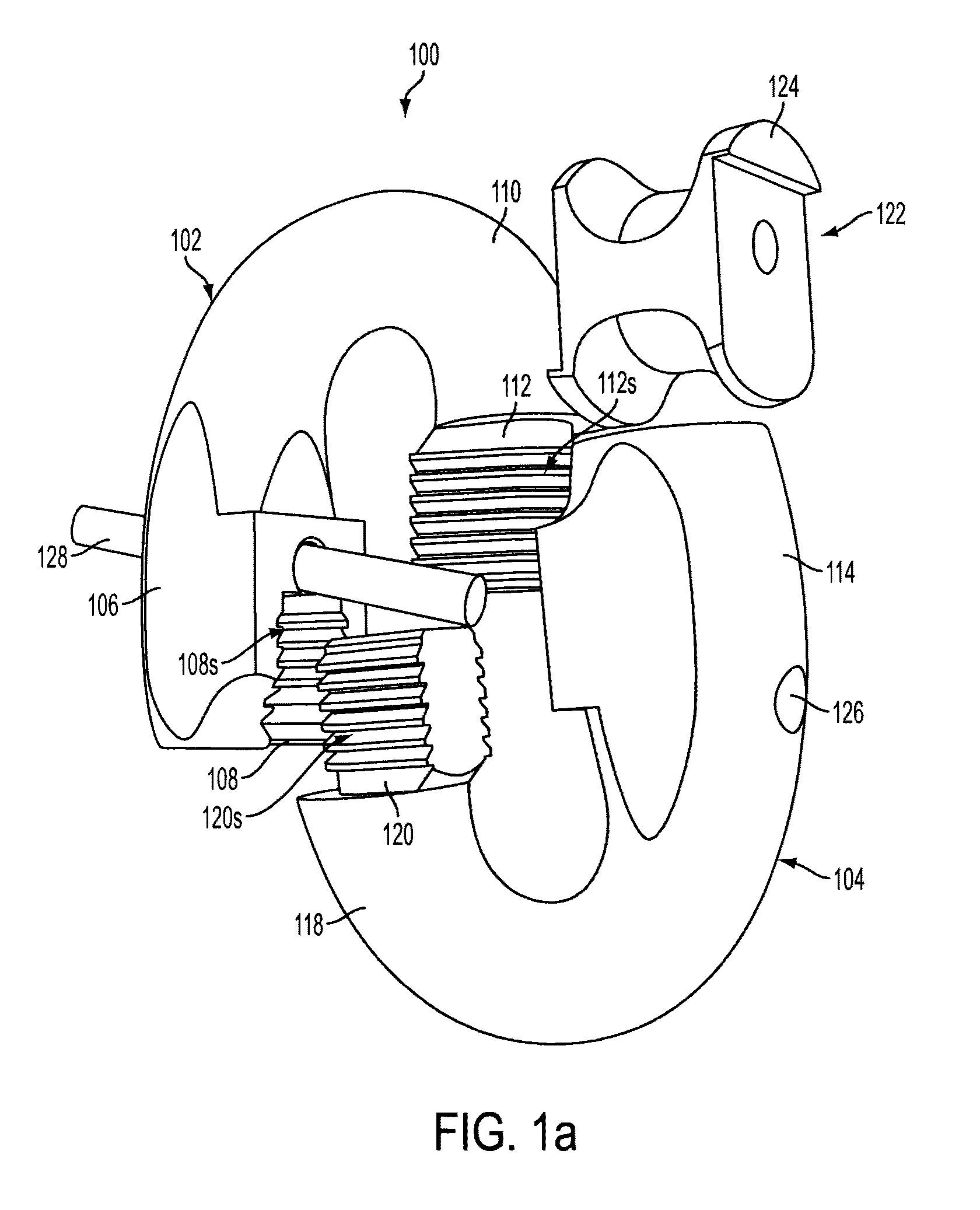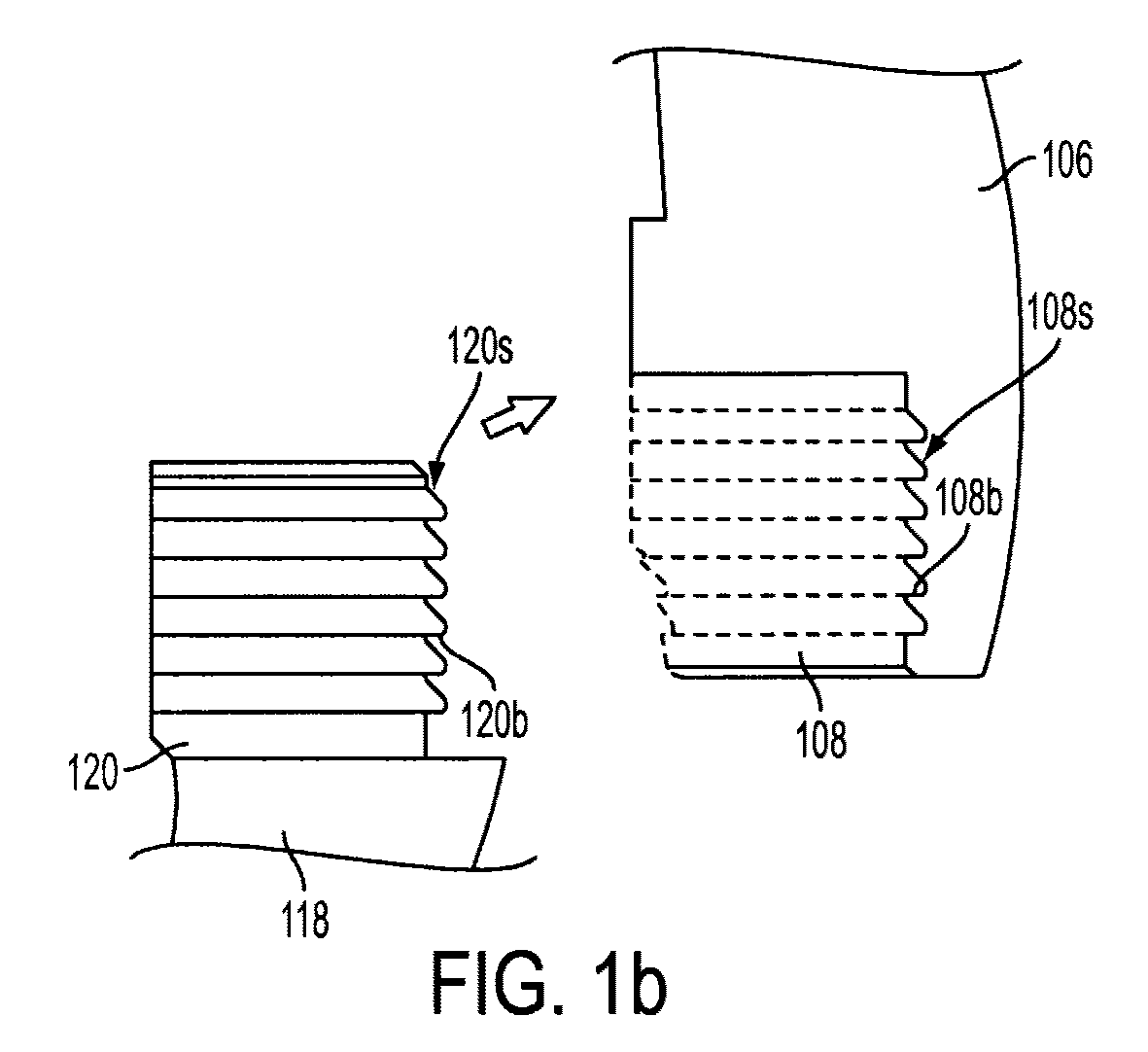Connector
a technology of connecting rods and connecting rods, applied in the direction of driving chains, hoisting chains, hauling chains, etc., can solve the problems of not meeting the new, cost and inconvenience, and the prior art connectors cannot meet the needs of the new, so as to reduce the tendency to move, increase the total bearing surface area available, and transmit force more efficiently
- Summary
- Abstract
- Description
- Claims
- Application Information
AI Technical Summary
Benefits of technology
Problems solved by technology
Method used
Image
Examples
example
[0048]A break load test was conducted on a 76 mm / 3″ connector, wherein D=1.30 d, as shown in FIGS. 1-3. FIG. 6 is a graph showing the break load test results. Although only a 16% improvement was expected, the break load test surprisingly yielded a break load of 8009.3 kN. In other words, the connector 100 of the present invention yielded a break load that was surprisingly 33% better than the connectors of the prior art. Moreover, the break load test also showed that the connector 100 failed in the crown area, rather than at the locking mechanism. Traditionally, such connectors fail at the locking mechanism. In this test, however, the locking mechanism remained intact and in fact, even after the connector of the present invention failed, the locking mechanism remained intact and was easily disassembled.
PUM
| Property | Measurement | Unit |
|---|---|---|
| Time | aaaaa | aaaaa |
| Time | aaaaa | aaaaa |
| Thickness | aaaaa | aaaaa |
Abstract
Description
Claims
Application Information
 Login to View More
Login to View More - R&D
- Intellectual Property
- Life Sciences
- Materials
- Tech Scout
- Unparalleled Data Quality
- Higher Quality Content
- 60% Fewer Hallucinations
Browse by: Latest US Patents, China's latest patents, Technical Efficacy Thesaurus, Application Domain, Technology Topic, Popular Technical Reports.
© 2025 PatSnap. All rights reserved.Legal|Privacy policy|Modern Slavery Act Transparency Statement|Sitemap|About US| Contact US: help@patsnap.com



